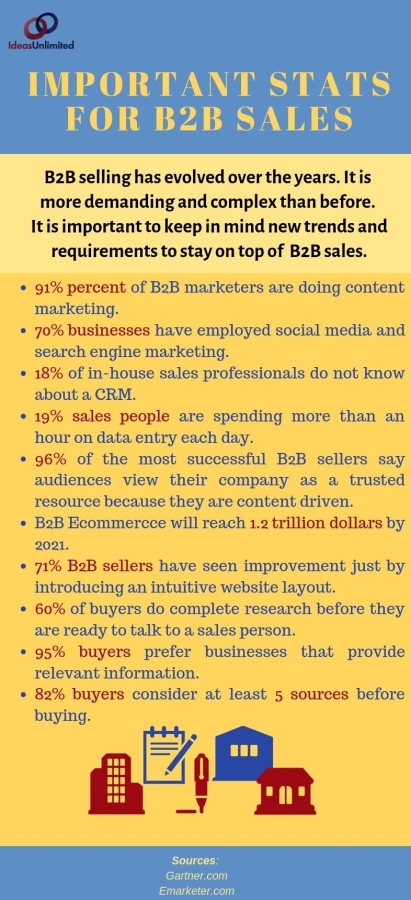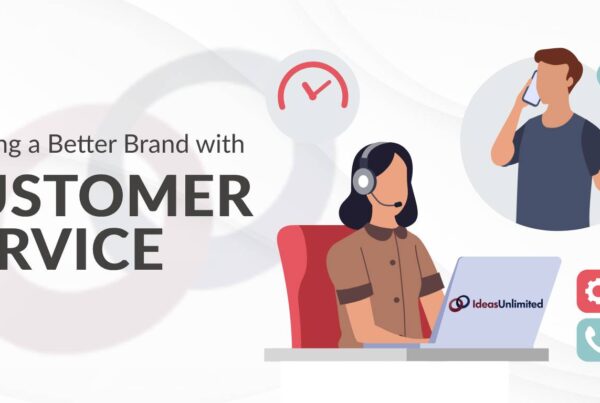Sales is tricky and difficult; and when you throw in a whole board of stakeholders and a hefty analysis for ROI, it becomes a lot more complicated, expensive, and strategic on both ends. B2B sales are a marathon of researching, connecting, marketing and selling, and certainly not a sprint.
B2B sales involve selling the idea of your product/service up the line towards the CEO or across the line towards the manager, depending on the size of your prospective client’s business. Despite the direction, your pitch has to go across many individuals and has to be convincing for all of them to be closed successfully.
It is more difficult in the B2B sales environment to plan your pitch and offer value to your clients. Generally, a B2B sales pitch is presented to a group of 6-10 stakeholders. Here your sales agent does not face an individual but a board or committee of different individuals who have diverse personalities, perspectives, and stakes regarding your offer. As an individual consumer has changed over time, business as a buyer has also evolved. B2B interactions have become more refined and are not linear anymore.
There are some general techniques that are followed by almost all sales teams to pace the first miles of their B2B marathon. The following checklist can help you warm up and build your momentum:
![]() Shorten response time for the buyer query
Shorten response time for the buyer query
![]() Undertake detailed research about the buyer
Undertake detailed research about the buyer
![]() Understand your buyer’s preferences and resources
Understand your buyer’s preferences and resources
![]() Research your competitors
Research your competitors
![]() Prepare your sales team
Prepare your sales team
![]() Take the marketing team onboard
Take the marketing team onboard
As the marathon crosses to the last few laps, the competition gets tougher. That is when your prospective client has gathered the information they were looking for and has shortlisted the options for their purchase decision. It is this time when losers and winners will be distinguished on the basis of their agility and technique!
These are 5 very important basics that you must know for winning your B2B sales Marathon:
1. Easy, High Quality Information
Key Lesson: Make sure you provide the right information in the right way and at the right time, to earn trust, leverage consensus, and win sales.
As a basic step, look thoroughly at all of your company’s media and mediums to ensure that they dispense high quality information about your products and services. This can also include information about your company, completed projects, and old or existing clients.
Moreover, this information should be easily accessible by your clients. Your potential client should not have to flip page upon page to find the information they require.
Research proves that the easy availability of high-quality information for the business buyers can help make their purchasing experience less complex and difficult. 77% of businesses report their purchasing process as tiresome and complicated. Also, each member of the buying group searches a few sources and then cumulates the information together to understand the pros and cons. 95% buying groups reported that they often need to reconsider their decisions because they chance upon some new information due to inconsistencies.
Therefore, it is not only important to have valuable information for your clients but also to detangle it and provide it to them in a consolidated, easy, and presentable form to save their time and efforts. This builds the supplier firm’s credibility as well.

2. Buyer Enablement
Key Lesson: For winning more B2B sales deals, look into ways of providing prescriptive tools and immediate practical support for each critical buying step of their entire buying process.
The concept of Buyer Enablement refers to facilitating potential clients in undertaking buying tasks. It shifts the responsibility to the seller’s side to provide relevant and useful information to the clients and create processes that favor their client and not their salesmen.
This has become a competitive edge, a differentiating factor for B2B sales. With so many alternatives and options available, it is crucial for a vendor to quickly respond to the buyers and not let them suffer through a tedious and poor experience to get information about hows or whats.
Business buying is a complete process that is divided into several tasks and jobs. In order to win big in today’s B2B sales environment, supplier organizations should facilitate the clients in their buying processes. It goes beyond provision of consistent quality information.
This may include augmenting their research and information by providing on-site tools for:
- Simple data analysis
- Basic diagnostics for assessing performance
- Basic diagnostics for analyzing alternatives
- Connecting to other stakeholders
- Data for comparisons
- Simulation: how the solution will help the client’s specific needs
Look at it this way, as a supplier you study and anticipate the needs of your modern buyer groups. Resultantly, you are curating a set of interactive and analytical tools for your clients to use on the spot. This is in addition to easy-to-navigate and relevant information that is provided for them to be able to make appropriate decisions faster and without difficulty of moving back and forth.
3. Trustworthy Digital Presence
Key Lesson: Tap into all the opportunities of B2B Ecommerce by partnering with an experienced Ecommerce Support Services providing company.
Since you are aiming for many closed deals and increasing positive leads in the pipeline, give priority to your digital presence as well. Ensure the credibility, trust, and authenticity that is generated through your online channels.
This is a part of buyer enablement: you help them find the insights that will enable them to better understand the features and relevancy of your offer. Millennial buyers will not trust your sales representative as much as they will trust the reviews on

your social accounts. 15% of a buying process time is spent on gathering information and discerning the truth. Therefore, it is imperative that you work on generating authentic reviews and materials such as relatable case studies and case reviews for your clients to read.
Let a specialist take care of social media accounts and website creation and maintenance. It is never a one-time cost to keep your online presence relevant and updated. Therefore, to stay focused on clients’ preferences and to avoid the added burden of keeping up with the social media trends, it is better to consider contracting options. This will ensure continuous sales, digital and omnichannel support for your business.
4. No one shoe fits all
Key Lesson: Let clients be the choosers. Offer them communication options and solutions and let them select.
Another important factor is how you communicate and build different channels of communication for your clients. Your organization as well as sales team should be able to offer several ways for communicating with the prospective buyer.
Rapport building is a must for sales, right? However, in order to facilitate the buyer and to keep the information crisp and precise, let your client have his own time for gathering and processing information. Let them choose their preferred way of communication, be it on call, email, or chat. Some people might prefer a one-on-one meeting each time to gain confidence in you.
Similarly, it should be only a click away to get a response, solution, or an explanation from your sales team. This means instead of leaving a form to be filled, which will receive a response in 3-5 days or may be even later, give them a direct link or call option that will be catered to right away by the right people at your organization. For example, giving choices, something like this, to the buyer to connect with your organization according to their needs and convenience puts them at ease and lets them choose what suits their buying job (and schedule) best.
The idea is to not try and fix every buyer group with same options. Customize your way of dealing and solutions as per the client’s requirements.
5. Train the Sales Team to Listen and Help
Key Lesson: Never undermine the importance of a competent sales team in a B2B sales environment. Invest in continuous training or contracting a reliable service provider to build a talented and professional workforce.
Here comes the most important part. It is all-encompassing and all-inclusive. All the relevant and easily available information will be, in fact, counterproductive if your sales personnel are not able to demonstrate authentic customer success.
Your sales representatives should be able to anticipate the needs and navigate through the buyer’s purchase cycle. They must be able to communicate effectively and understand the demands of your clients and how they view themselves and their challenges. Listening to them will enable the sales team to work on the clients’ success and show them how your products or services can elevate their operations. 69% buyers say that the only way to convince them is by listening to them.
Working through a purchase cycle and listening to the clients may not actually lead to sales. But it is crucial when you consider long term growth of your company, positive word of mouth, and professionalism.
To meet the expectations of your contemporary clients, build or hire a team that is competent, able to multitask, can converse in multiple languages, shows curtesy and understanding, and professionally handles queries and clients.
Moreover, depending upon the size and type of your operations, your sales team needs to be equipped with a set of analytical and virtual tools to help them become more productive, collaborative and results oriented. For quality leads in the pipeline and to score more sales, investing in your teams’ skills is crucial. It requires training them to satisfy multiple concerns effectively and in a timely manner. It also involves focus on training and mentoring your sales operators and sales teams to create a pleasant experience for your potential clients, which may or may not convert into closed sales.
As B2B sales is becoming digital and more complex, work on the strengths of your organization and portray them in the best light to your prospective clients. Collaborating with a support services provider takes away the worries of specialized tasks that can be expensive and an added burden if handled in-house. Investing in your website and social media management, sales team support, multilingual support and data entry, and analytical backup can take you a long way in achieving growth and an enviable market standing.









